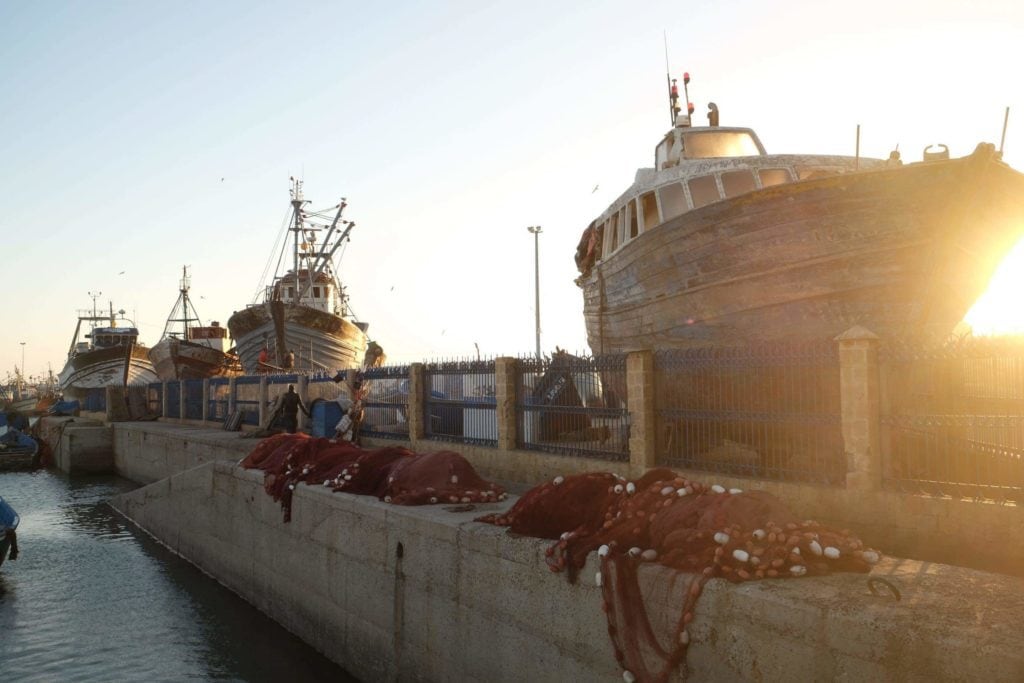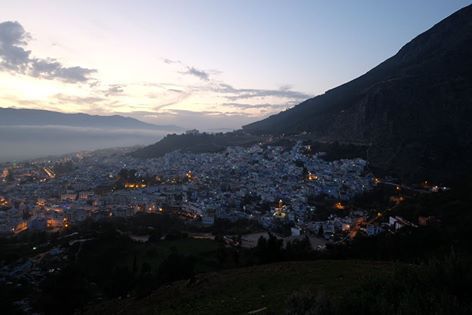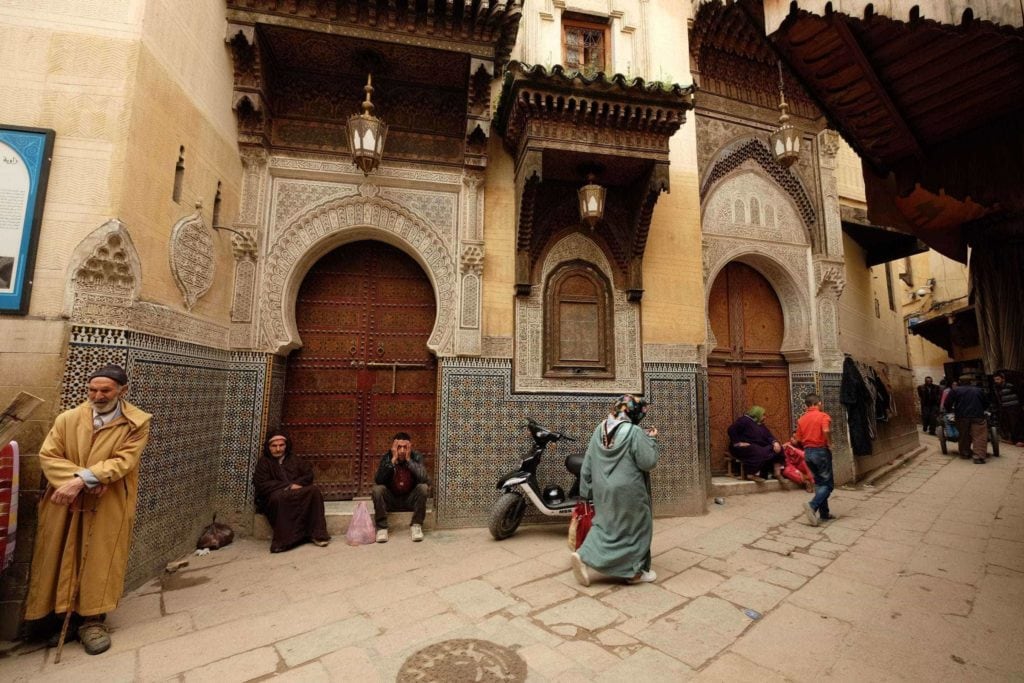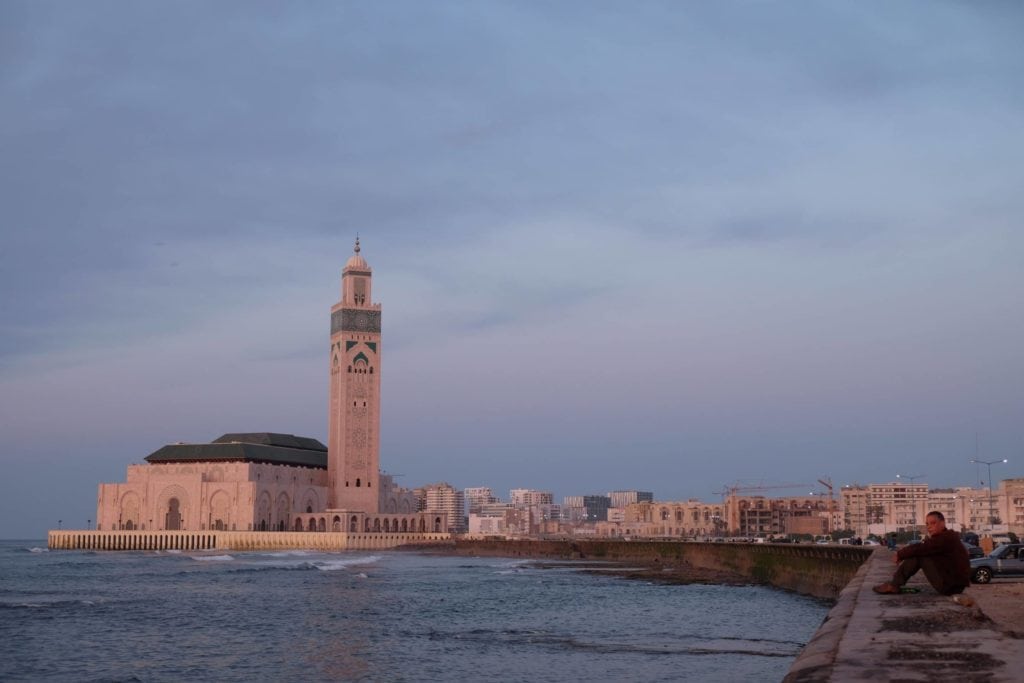The past 4 weeks have been a whirlwind of sights, colors, sounds, great food, friendly locals, and an adventure or three.

From Merzouga and the arid sand sea of the great Sahara, to Marrakech at the base of the rugged High Atlas Mountain range, to Essaouira and the Mediterranean coast, then inland from the capital of Rabat to the blue village of Chefchaouen tucked in a nook of the Rif Mountains, down to the Yellow City of Fez and its ancient medina, then on to Meknes and finally ending back on the coast in Morocco’s White City, Casablanca. I caught a solar eclipse amongst Erg Chebbi’s dunes, learned about different specialized fishing vessels from salty sailors in Essaouira, bargained for finely crafted lamb wool scarves in Marrakech’s souk, listened to Moroccan storytelling masters keeping the tradition alive, sipped mint tea and watched the sunset from the Andulusian gardens in Rabat’s weather-worn kasbah, and learned about the ancient tanning process still being practiced today in Fez’ famous tanneries (who knew pigeon pooh was so useful).
I had an amazing time getting to know Morocco — its people, diverse landscape and rich history and culture.
Morocco was a very easy country to travel in. And as a solo woman, I felt comfortable traveling alone. Moroccans are friendly, helpful and hospitable. The bus and train system is excellent — reliable, a good value, clean and comfortable. The food has been delicious. It’s healthy, fresh, and incredibly good; a wonderful mix of North African, Arab, Berber, Middle Eastern and European with the French attention to subtle flavors.
Last I left you friends and fellow travelers, I had just finished Marrakech. I now think of it as magical Marrakech. After a month exploring the best of Morocco, Marrakech still remains my favorite city. The Red City feels like the San Francisco of Morocco. Artsy, progressive, quirky, fun – it’s a city that lives for the day and night. Yet, Marrakech also values its heritage and cultivates a rich tradition of supporting and preserving Moroccan culture and history. The city does have a lot of tourists, but it’s also easy to get away from the crowds and get into the Moroccan culture through the many events going on in the city. The crazy Djemaa el-Fna is as much for locals as it is for tourists. This keeps the city feeling authentic.
Visiting Morocco: Interested in joining an ArchaeoAdventures Tour to Morocco? Learn more about or Majestic Morocco tour
From Marrakech I headed across the High Atlas Mountains to Merzouga and the Erg Chebbi dunes of the Sahara. I

photographed March’s total solar eclipse from the top one of these large sand structures, then spent the evening under the stars camping deep in the desert. After the Sahara, I stopped in the commercial center of Ouarzazate where I drove the ‘Road of a Thousands Kasbahs’ into the Dades Gorge and visited Ait Benhadou as it was cast in the warm glow of the setting sun. Then it was on to the Mediterranean coast and the seaside village of Essaouira. Names the Wind Capitol of Africa, Essaouira is known for its tasty seafood, laid back atmosphere, and yes its wind which brings surfers to tackle the crashing waves. Essaouira, even given its weekend destination potential and its close proximity to Marrakech, still feels local, small town and authentically Moroccan. The blowing wind helps keep the throngs of tourists at bay.
After enjoying the slower pace of life Essaouira for a few days, I drove up the coast to Rabat, Morocco’s capital city. A provincial, modern city, Rabat felt like where Morocco is growing to. It is a bustling, modern city with an efficient tram network, yet also a history that dates thousands of years to the time of the Phoenicians and Romans. Many different civilizations have left their mark on Rabat, providing rich sites to explore.

From Rabat, I traveled inland to the Rif Mountains and the Blue City (more like a mountain hamlet) of Chefchaouen.

Maybe it was the color, the mountains or even that the village is a sister city of my hometown, Issaquah, Washington, but there was something very special about Chefchaouen. Painted a pastel blue (the lighter color a mix of the dark Jewish blue and the white of the Arabs), the town is tucked into the hillside of one of the ribs of the Rif. It’s winding cobbled laneways, zigzag up the side of the mountain. Each street seems to be work of art and photographer’s dream. At dusk, the lights turn on, twinkling amongst the pale blue of the city. Chefchaouen is an excellent place to spend some time exploring the surrounding mountains, eating freshly made pastillas, and even joining a local wedding that takes over the town at midnight.
I followed the Riff Mountains farther south to the Yellow City, Fez. Fez’s massive medina is the oldest in Morocco. The streets are narrow and packed with people, shops and goods. It’s a great place to get lost. I never knew what I would discover when turning a corner in Fez – a fantastic restaurant set in a secluded garden, a beautiful tiled fountain, a butcher proudly displaying his camel heads, an elderly lady selling freshly collected mint, a small tea stand that let me hop behind kettle and try my hand at making a few pots, a bakery tucked away down an alley that was working hard stoking their fires and keep a steady stream of fresh bread being served to feed the neighboring families. Fez is a city of layers. On the surface is the hard sell to buy crafts or visit the tanneries. But if you spend a little time away from the main tourist street it’s a “real” working city that has been living the same way for over 1,000 years. Donkeys are still the primary mode of transport. Families still send their dough to their local bakery to be baked using traditional methods. Tea is still handmade lovingly in aluminum kettles and delivered by the cup or pot. Buildings are being restored using traditional building methods. The entire medina, which houses over 600,000 people without a single high-rise building, was declared a UNESCO world heritage site. If there is anywhere in Morocco to hire a local guide, it’s in Fez. A knowledgeable specialist in culture and history (that doesn’t push all the touts) can bring the city’s a thousand years of history to life and help you experience the genuine Fez (as well as break down the language barrier when it comes to photographs).

After a few days in Fez, I was ready for a slightly slower paced, “smaller” town, so I headed to Meknes. Which is ONLY home to 1.5 million people. Meknes is a real gem. Overshadowed by Fez (it’s only a short 45 minute train ride), visitors usually skip Meknes, making it a wonderful place to spend some time tourist free. It’s an easy place to enjoy Moroccan culture without the hardsell that many of the other touristy towns have. Close to Moulay Idriss and Volubilis, and with the wonderful mausoleum of Moulay Idriss, I enjoyed spending a couple days in Meknes.
To wrap up my time in Morocco, I hoped on a train and headed back to the coast and Morocco’s White City, Casablanca.

Casablanca is Morocco’s commercial center, but worth at least a day to see the stunning Hassan II Mosque, stroll its wide, tree-lined boulevard, and watch the sunset with the locals on Casablanca’s corniche. Casablanca gets a bad rap as a boring city, but after 4 weeks of medinas, mountain villages, kasbahs, carpets, ancient souks, and historical buildings that are slices of history – the White City was a breadth of fresh air with its modern touch, colonial architecture, and lack of focus on tourism.
Up next, I head to Cairo to take a small private ArchaeoAdventures’ group around Egypt for three weeks. I invite you to follow our trip on ArchaeoAdventures’ Facebook page as well as this blog. And if you haven’t already, subscribe to our monthly newsletter where I will both keep you up-to-date with our tour news as well as share all my travel tips, tricks and insight on North Africa and the Middle East. To sign-up for our monthly newsletter visit archaeoadventures.com, scroll down to the bottom of the page and there is a subscription box where you can enter your email details.
Over the next three weeks, I will post photos and videos each day from Egypt on ArchaeoAdventure’s Facebook page — sharing great travel tips and advice that can help make you plan your next trip to Egypt.




2 thoughts on “Morocco Highlights and What’s Next: 30 Days, 9 Great Cities, 4 Diverse Geographical Regions, A Thousand Memories (And Even More Photographs)”
What a fascinating adventure and marvelous pictures. T. Swan